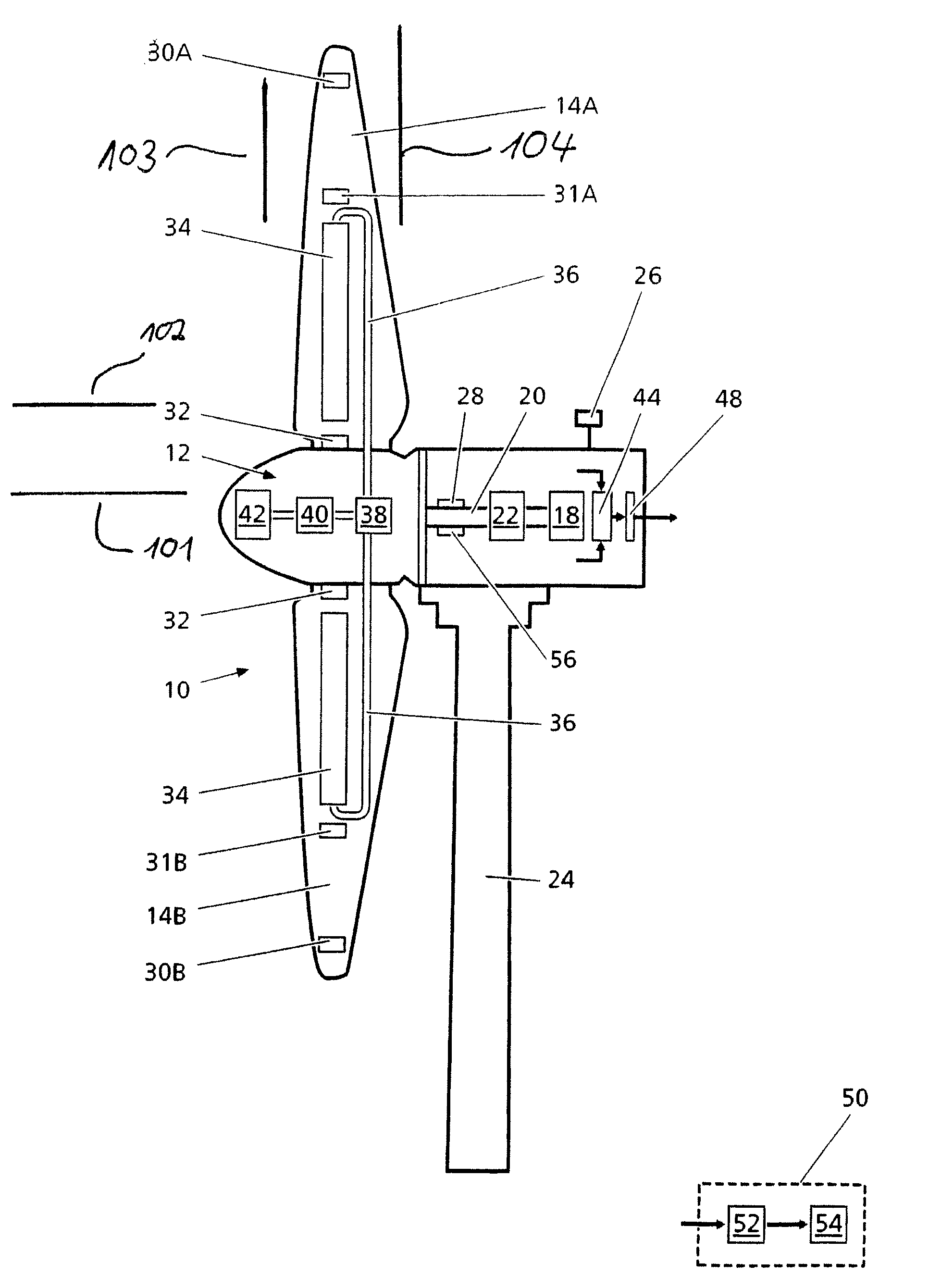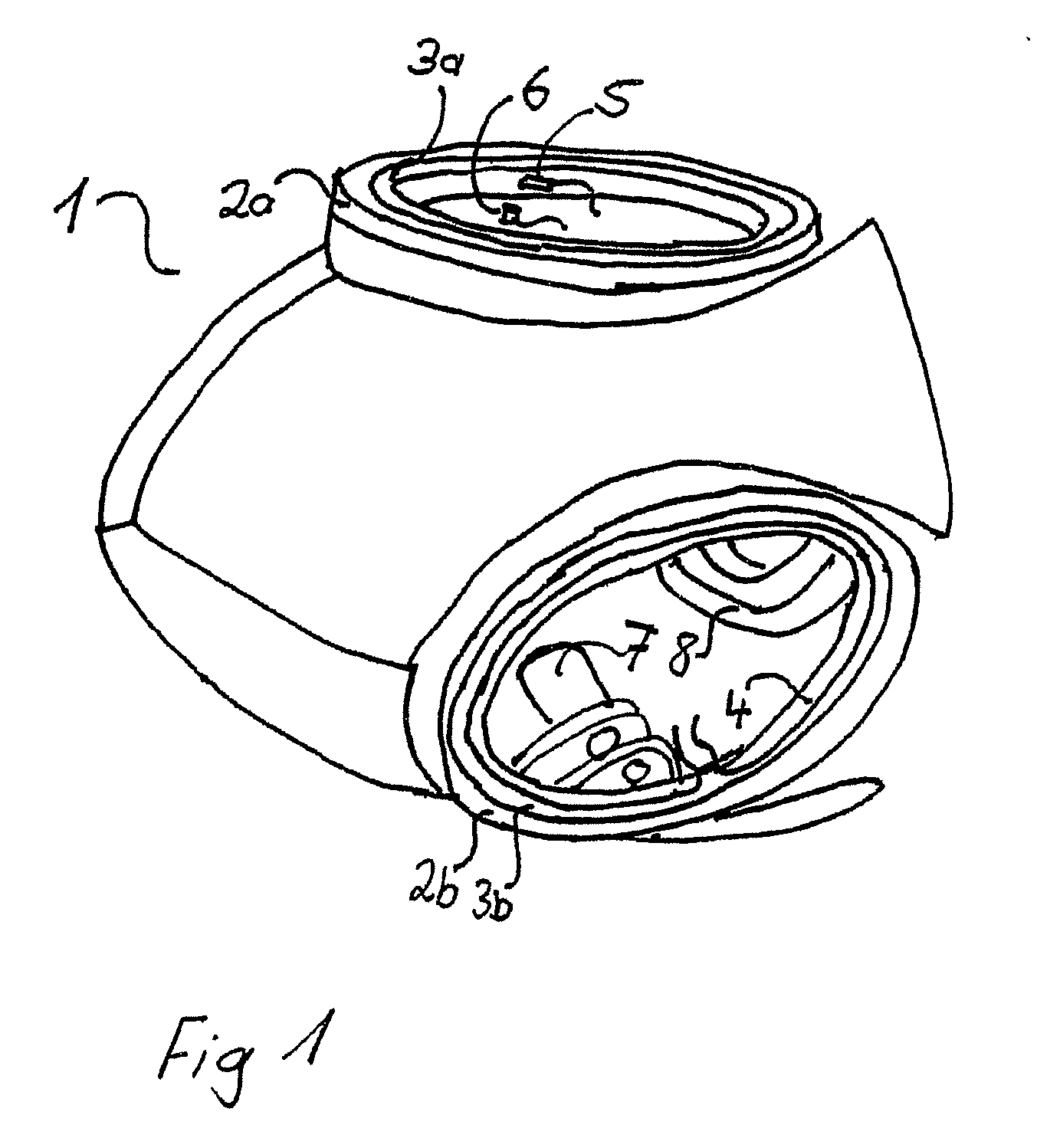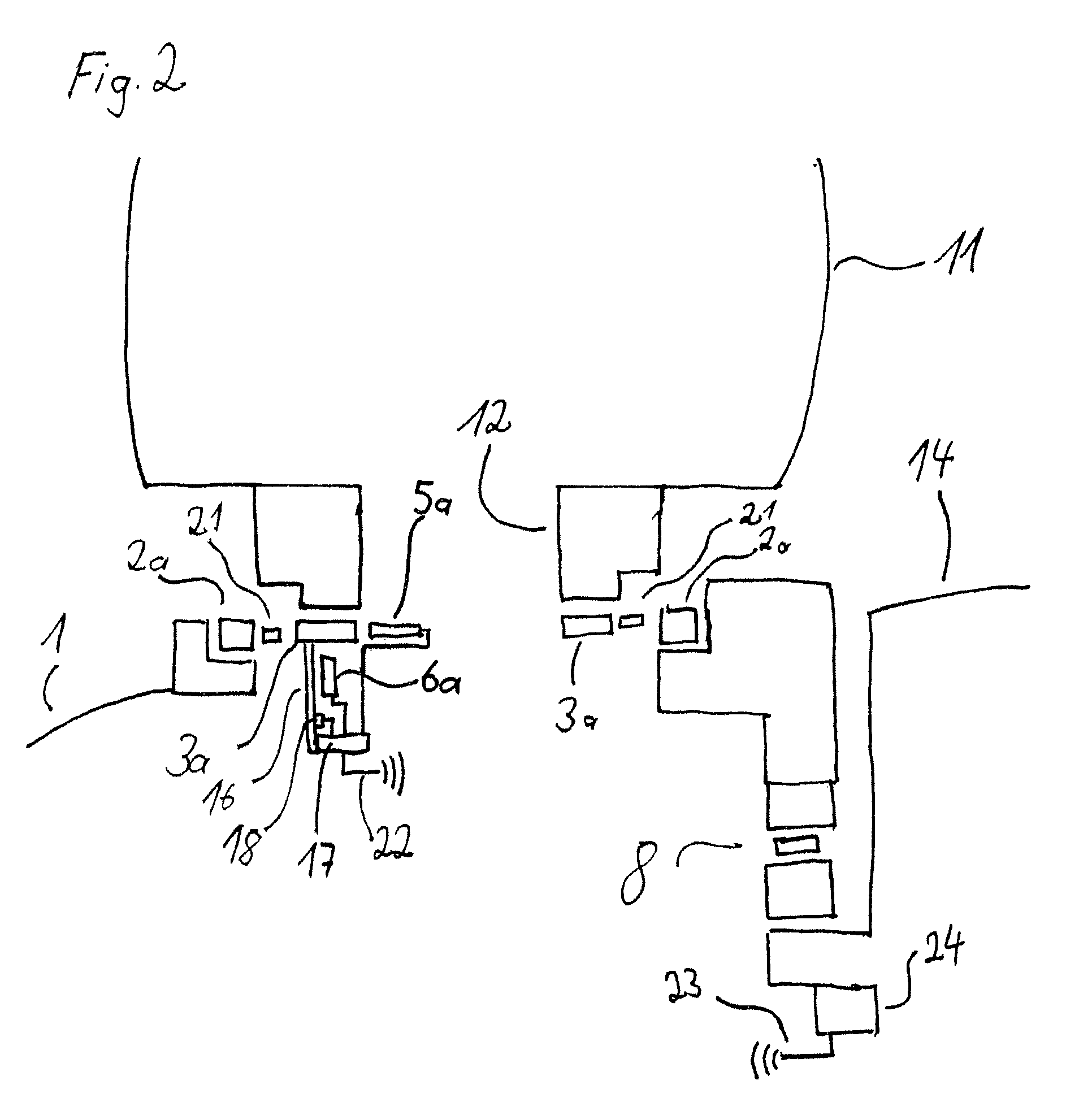Device and method for detecting the loading of pivoted rotor blades
- Summary
- Abstract
- Description
- Claims
- Application Information
AI Technical Summary
Benefits of technology
Problems solved by technology
Method used
Image
Examples
Embodiment Construction
[0018]FIG. 1 shows a rotor hub 1 of a wind power plant which is intended, here, for accommodating three rotor blades. The rotor blades are pivotally mounted in outer bearing rings 2a, 2b and inner bearing rings 3a, 3b (the third bearing ring is not shown). The angular position of the rotor blades can be changed by way of a drive 7. The connection to gearing in the gondola of the wind power plant takes place via the main bearing 8.
[0019]The inner ring 3a is monitored using two proximity sensors 5, 6. These proximity sensors are securely joined to the rotor hub 1 by way of holding devices (not shown). The proximity sensors detect deformation of the bearing ring 3a. These proximity sensors 5, 6 can be inductive sensors. Here, the sensor 5 measures deformation in the radial direction relative to the axis of rotation of the bearing. The sensor 6, conversely, measures deformation in the axial direction relative to the axis of rotation of the bearing. These proximity sensors are connected ...
PUM
 Login to View More
Login to View More Abstract
Description
Claims
Application Information
 Login to View More
Login to View More - R&D
- Intellectual Property
- Life Sciences
- Materials
- Tech Scout
- Unparalleled Data Quality
- Higher Quality Content
- 60% Fewer Hallucinations
Browse by: Latest US Patents, China's latest patents, Technical Efficacy Thesaurus, Application Domain, Technology Topic, Popular Technical Reports.
© 2025 PatSnap. All rights reserved.Legal|Privacy policy|Modern Slavery Act Transparency Statement|Sitemap|About US| Contact US: help@patsnap.com



